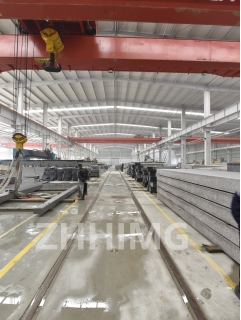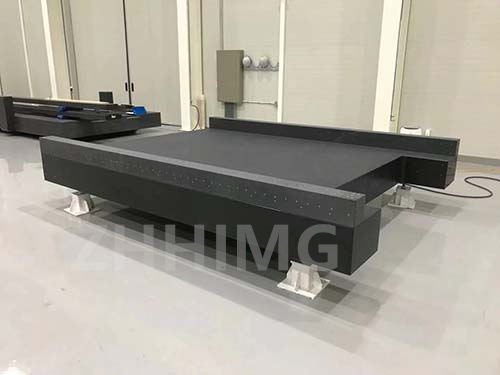In the field of semiconductor manufacturing, automatic optical inspection (AOI) equipment plays a crucial role in ensuring the quality of chips. Even a slight improvement in its detection accuracy could bring about a huge transformation to the entire industry. The equipment base, as a key component, has a profound impact on the detection accuracy. In recent years, a revolution in base materials has swept through the industry. Granite, with its outstanding vibration suppression performance, has gradually replaced traditional cast iron materials and become the new favorite of AOI inspection equipment. Its vibration suppression efficiency has increased by 92% compared to cast iron. What technological breakthroughs and industry changes lie behind this data?
The strict requirements for vibration in semiconductor AOI inspection equipment
The manufacturing process of semiconductor chips has entered the nanoscale era. During the AOI inspection process, even extremely tiny vibrations may cause deviations in the inspection results. The fine scratches, voids and other defects on the surface of the chip are often at the micrometer or even nanometer level. The optical lenses of the detection equipment need to capture these details with extremely high precision. Any vibration transmitted by the base will cause the lens to shift or shake, resulting in blurred image acquisition and thereby affecting the accuracy of defect recognition.
Cast iron materials were once widely used in the bases of AOI inspection equipment because they have certain strength and processing performance, and the cost is relatively low. However, in terms of vibration suppression, cast iron has obvious shortcomings. The internal structure of cast iron contains a large number of graphite sheets, which are equivalent to tiny voids inside and disrupt the continuity of the material. When the equipment operates and generates vibration, or is disturbed by external environmental vibration, the vibration energy cannot be effectively attenuated in the cast iron but is constantly reflected and superimposed between the graphite sheet and the matrix, resulting in the continuous propagation of vibration. Relevant experiments show that after the cast iron base is excited by external vibration, the vibration attenuation time can last for several seconds, which will have a serious impact on the detection accuracy during this period. In addition, the elastic modulus of cast iron is relatively low. Under the long-term action of equipment gravity and vibration stress, it is prone to deformation, further intensifying the vibration transmission.
The secret behind a 92% increase in the vibration suppression efficiency of granite bases

Granite, as a kind of natural stone, has formed an extremely dense and uniform internal structure through geological processes over hundreds of millions of years. It is mainly composed of mineral crystals such as quartz and feldspar closely combined, and the chemical bonds between the crystals are strong and stable. This structure endows granite with outstanding vibration suppression ability. When the vibration is transmitted to the granite base, the mineral crystals inside it can rapidly convert the vibration energy into heat energy and dissipate it. Studies show that the damping of granite is several times higher than that of cast iron, which means it can absorb vibration energy more efficiently, reducing the amplitude and duration of vibration. After professional testing, under the same vibration excitation conditions, the vibration attenuation time of the granite base is only 8% of that of the cast iron, and the vibration suppression efficiency has increased by 92%.
The high hardness and high elastic modulus of granite also contribute significantly. The high hardness ensures that the base is less likely to deform when bearing the weight of the equipment and external force impacts, and always maintains a stable supporting state. The high elastic modulus ensures that the base can quickly return to its original shape when subjected to vibration, reducing the accumulation of vibration. In addition, granite has excellent thermal stability and is almost unaffected by changes in environmental temperature, avoiding thermal expansion and contraction deformation caused by temperature fluctuations, thereby further ensuring the stability of vibration suppression performance.
Industry Transformation and Prospects Brought about by granite bases
The AOI inspection equipment with a granite base has significantly improved its detection accuracy. It can reliably identify defects in smaller-sized chips, reducing the misjudgment rate to within 1% and greatly enhancing the yield rate of chip production. Meanwhile, the stability of the equipment has been enhanced, reducing the number of shutdowns for maintenance caused by vibration issues, extending the service life of the equipment, and lowering the overall operating costs.
Post time: May-14-2025

